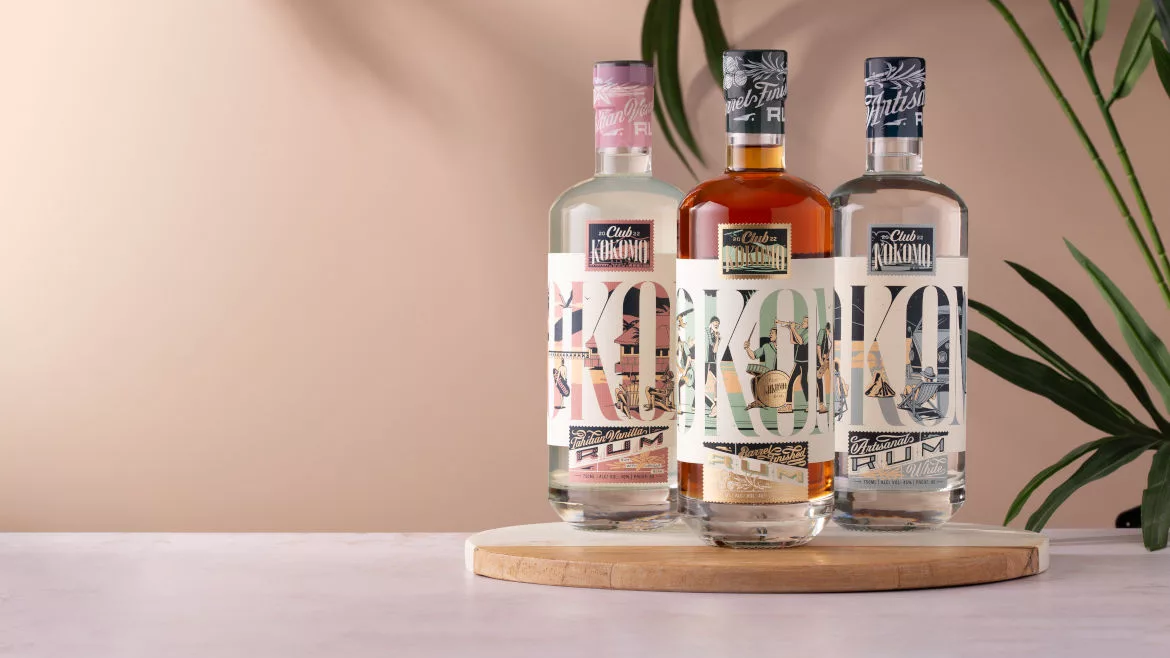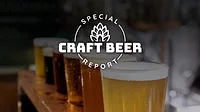Spirits category pivots to meet consumer demands
Premiumization, health trends spur growth for RTD spirits

Image courtesy of Club Kokomo Spirits Inc.
After following the Yellow Brick Road to Emerald City, in the 1939 film “The Wizard of Oz,” Dorothy discovers that she can return to Kansas simply by closing her eyes, clicking the heels of the ruby slippers together while repeating the phrase, “There's no place like home.”
In the real world, consumers also have discovered “there’s no place like home” when it comes to beverage alcohol consumption — impacting the spirits category.
In its December “Dark Spirits – US – 2023” report, Mintel, Chicago, notes that six in 10 drinkers enjoy making cocktails at home.
“Dark spirits can benefit from connections to both legacy associations and the new kid on the block: ready-to-drink (RTD) cocktails,” the report states. “Dark spirits are not quite as popular as white spirits, but there is real opportunity if brands can ‘lighten’ the mood.
“Consumers’ top interest in cocktails, for example, is a refreshing flavor profile — while this is not always associated with dark spirits, it is certainly within reach with the right recipe(s),” the report continues.
Among other key takeaways is the U.S. dark spirits market is experiencing steady growth, increasing by 8.3% in 2023, according to Mintel. Whiskey continues to drive the growth; however, efforts to bring brandy and cognac to younger generations is needed, it states.
Michael Wyatt, client insights consultant for Chicago-based Circana, notes that the U.S. spirits market grew 6.1% in the past year — outpacing beer and wine over the same time period.
“Conversely, rum, gin, brandy and cognac have been the most challenged over the past year,” Wyatt says. “RTDs and tequila have shown the biggest improvement compared with previous years while cordials also experienced a moderate resurgence this past holiday season.”
Brian Sudano, CEO of S&D Insights LLC, Norwalk, CT, describes the spirits market as “flat” with gains from RTDs and tequila offsetting the declines of the rest of the market.
“Tequila continues to lead growth followed by bourbon and of course RTDs,” he says. “Generally speaking, all segments of the spirit industry slowed versus trends in 2022.”
Premiumization, health trends spur growth
Although white and dark spirit segments face different challenges in regards to market growth, experts highlight how key consumer trends are impacting the overall category.
In its “White Spirits – US – 2023” report, Mintel suggests that there is room for brands to strengthen spirits associations as an easy and convenient way to relax at home, noting that consumers who reach for these drinks more often do so for stress relief.
Likewise for dark spirits, Mintel points to the push and pull between consumers’ quest for health and state of stressors, noting that brands can find balance in relaxation.
“Relaxation remains the main motivator for alcohol consumption,” it states. “Recreation can be an integral part of relaxation, especially since fun also tops consumer motivation for adult beverages. In order to win occasions from other options and recruit new users, dark spirits need to show their lighter side, proving they are a fun, easy option.”
Expanding on its portfolio of canned cocktails, Malibu, a brand of Pernod Ricard, New York, introduced its new ready-to-serve (RTS) cocktail line, taking convenience to the next level with a portable, shareable pack, the company says. The new line — Strawberry Daiquiri, Pineapple Bay Breeze and Rum Punch — is set to hit shelves this spring.

"We’ve seen the ready-to-serve category grow more than 70% in the past year, including a rise in rum drinks, which is a great opportunity for Malibu to deliver on what our consumers are looking for — easy and delicious cocktails,” said Matt Foley, vice president of marketing for Malibu, in a statement. “With Malibu’s most popular tropical cocktails now available in a shareable format, this is the perfect option for getting together with friends and experiencing the summer mindset that a Malibu drink delivers.”
This March, SKYY Vodka, a brand of Campari America, New York, announced the arrival of SKYY Vodka & Soda, a premium canned cocktail available in two citrus-led flavors: Lemon & Elderflower and Lime & Mint. The ready-to-drink (RTD) cocktails feature key ingredients including real SKYY Vodka, soda, natural citrus and botanical flavors, with just 90 calories in each can, the company says.
“Since its inception, SKYY has been dedicated to crafting the most exquisite vodka possible. This commitment extends seamlessly to our carefully curated canned cocktails," said Mark Watson, senior category director at Campari America, in a statement. “Just like our founder, Maurice Kanbar, who spent years developing a proprietary distillation and filtration process to produce the smoothest tasting vodka he could find, we continue to take the necessary steps to perfect our products across the entire SKYY portfolio — from identifying the best tasting flavor combinations, to ensuring the effervescence of the soda in our RTD's is just right.”
Circana’s Wyatt suggests that consumers’ quest for healthier spirit options has spurred success for spirits-based RTDs.
“Consumers are looking for simpler ingredients and arguably healthier options within spirits, which has propelled the success of spirits-based RTDs, especially those touting natural ingredients such as real fruit juice,” he explains. “Additionally, despite some lingering economic pressures, consumers are willing to pay more for what they perceive as higher quality or upscale products.
“This is evidenced by premium and luxury whiskey and tequila over-indexing value products within the same segments, and further supporting the overall premiumization trend,” Wyatt continues.
S&D Insights’ Sudano echoes similar sentiments, also noting how whiskey and tequila are benefiting from premiumization trends.
“Whiskey, especially bourbon, and tequila continue to benefit from premiumization,” he says. “It also fits in with RTDs that are part of the broader alternative adult beverage market, which includes both wine and beer based RTDs, but at a higher price point with the perception of being of higher quality by a large part of the RTD market consumers.”

Trends for the future
Alongside convenience and premiumization impacting the spirits market, experts highlight how demographic trends also are impacting the category.
As far as spirit choices, Mintel notes that “men and women agree to disagree (mostly).”
“Taste matters for both men and women, but in very different ways. Men have stronger brand loyalty, while women lean more toward flavored products and cocktails,” it states. “Brands that have a large family of products may be best suited to address the needs of a family of spirit drinkers with both sexes.”
When it comes to attracting younger legal age spirit drinkers, Mintel points to Gen Z as offering opportunities for brands.
“Spirits have a real opportunity on the horizon with Gen Z alcohol consumers, 72% of whom say they enjoy making cocktails at home, and 30% (the most of any generation) who consider collecting spirits a hobby,” it states. “The opportunity is particularly exciting, as Gen Z is more broadly steering themselves away from alcohol.
“Gen Z is especially interested in both alcohol free options and cocktails, creating space for no-ABV products to step in,” it continues. “A variety of options exist, but need to amplify their presence, especially in spaces where Gen Z is looking to drink without drinking.”
Circana’s Wyatt notes that, although the sober curious movement is gaining traction, the market impact of alcohol-removed spirits remains small.
“While certainly a segment to watch, low- and no-alcohol spirits have not really made significant traction within the category as evidenced by accounting for less than 1% of total spirits sales,” he says.
S&D Insights’ Sudano echoes similar sentiments, noting that cannabis beverages, non-alcohol beer, and other substitutable products are competing with spirits.
“DISCUS labeled 2023 as a reset year; however, overall beverage alcohol consumption per caps continue to decline. For regular spirits, excluding RTD, last year was its weakest performance since 2000,” Sudano says. “Many things contributed to this, to include consumers drinking less, RTDs changing habits and emergence of greater availability of non-alcoholic alternatives and cannabis.
“Overall, I expect the spirit industry to perform similarly to 2023 with some segments performing a little better and others a little worse,” he continues.
Looking ahead, Circana’s Wyatt anticipates that the spirits market will see growth.
“The U.S. spirits market should perform at about plus 4% to plus 6% growth next year,” he says. “We expect this growth to be driven by spirits-based RTDs coupled with higher-end tequila and whiskey as these segments continue to evolve, develop, and attract both new and loyal consumers.”
Looking for a reprint of this article?
From high-res PDFs to custom plaques, order your copy today!






